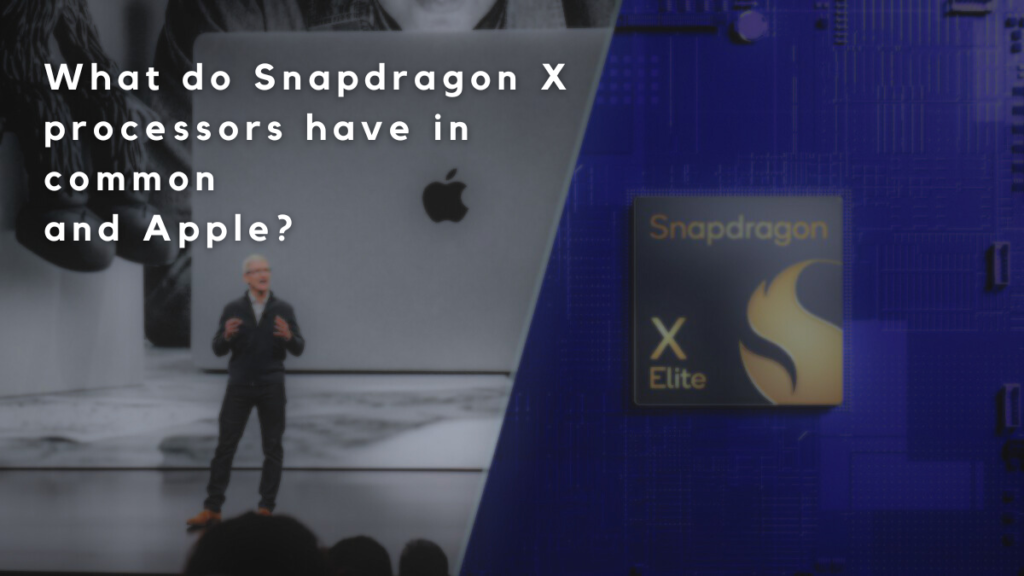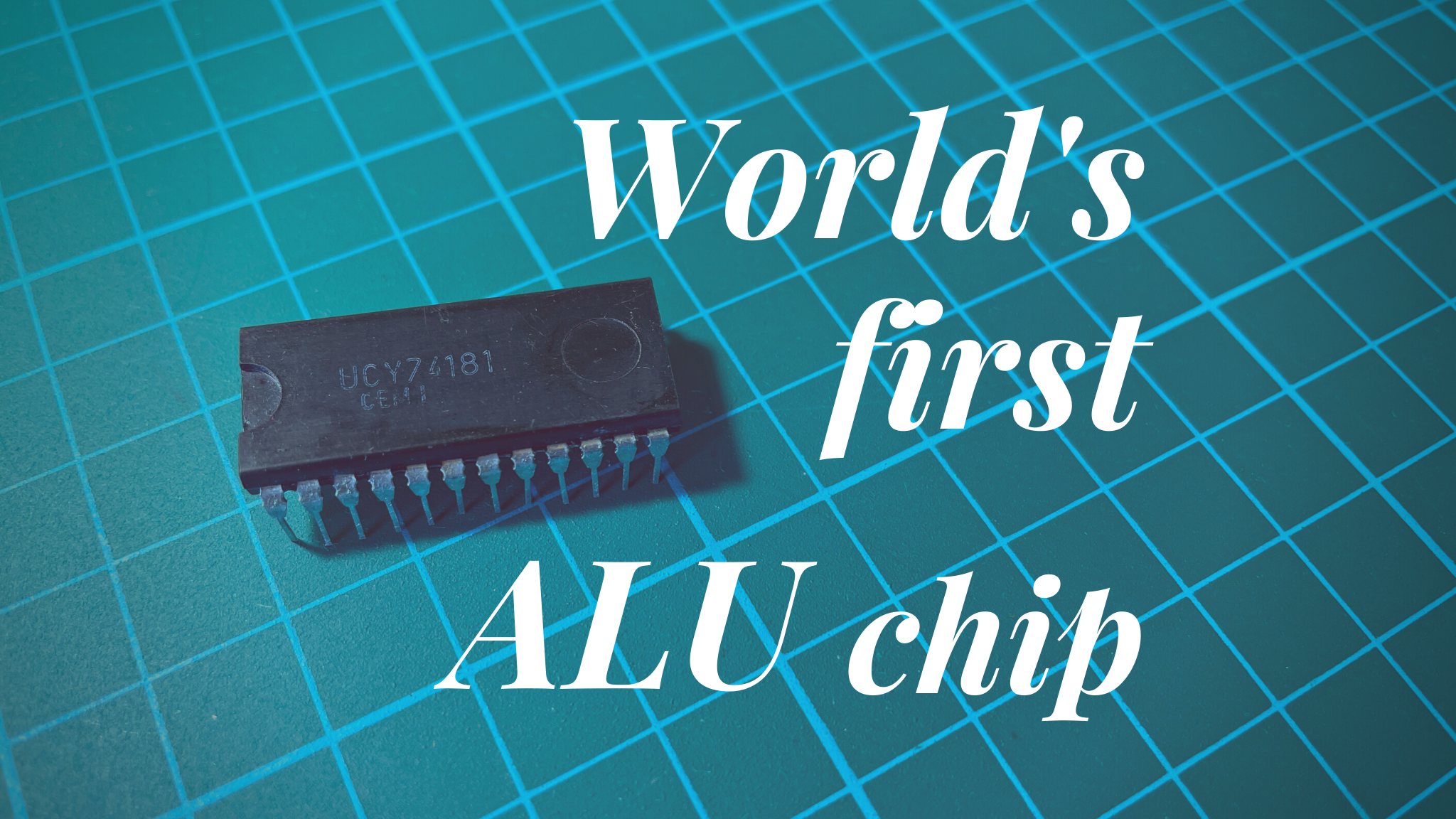One of the more interesting developments in the world of technology is the recent launch of a new series of ARM processors created by Qualcomm. We are, of course, talking about the Snapdragon X Elite and Snapdragon X Plus chips, which are designed to run in Windows laptops. This is not the first attempt to combine Windows and ARM architecture CPUs, but it is the first one that, in my opinion, can succeed. However, in order for me to sufficiently explain the full background of this story, we need to go back to 2007.
Apple and their first integrated circuits

The current iPhone models presented to the world sell millions of units, but the Cupertino company’s first steps in the cell phone segment were not necessarily so fruitful. Before the release of the first-generation device, many in the industry predicted a huge failure for Apple. Above all, the statement of the then head of Microsoft, who said that no one would buy such an expensive phone that did not have a keyboard, went down in history. In a similar vein, his opinion was voiced by representatives of Research In Motion (today BlackBerry), who accused Apple of lying, since, according to him, a device with such a large screen had no right to work without an external power supply. However, despite criticism from the industry, the presentation of the first iPhone was a success, and many today consider it the beginning of the era of modern smartphones.
From today’s perspective, this phone no longer seems so impressive, but in its time the device was quite impressive. The main thing to mention here is the 3.5-inch touchscreen, which required quite powerful hardware to operate. At the time, Apple was not a chip design company, so they decided to work with Samsung, which designed and manufactured the processor used in the first-generation iPhone.
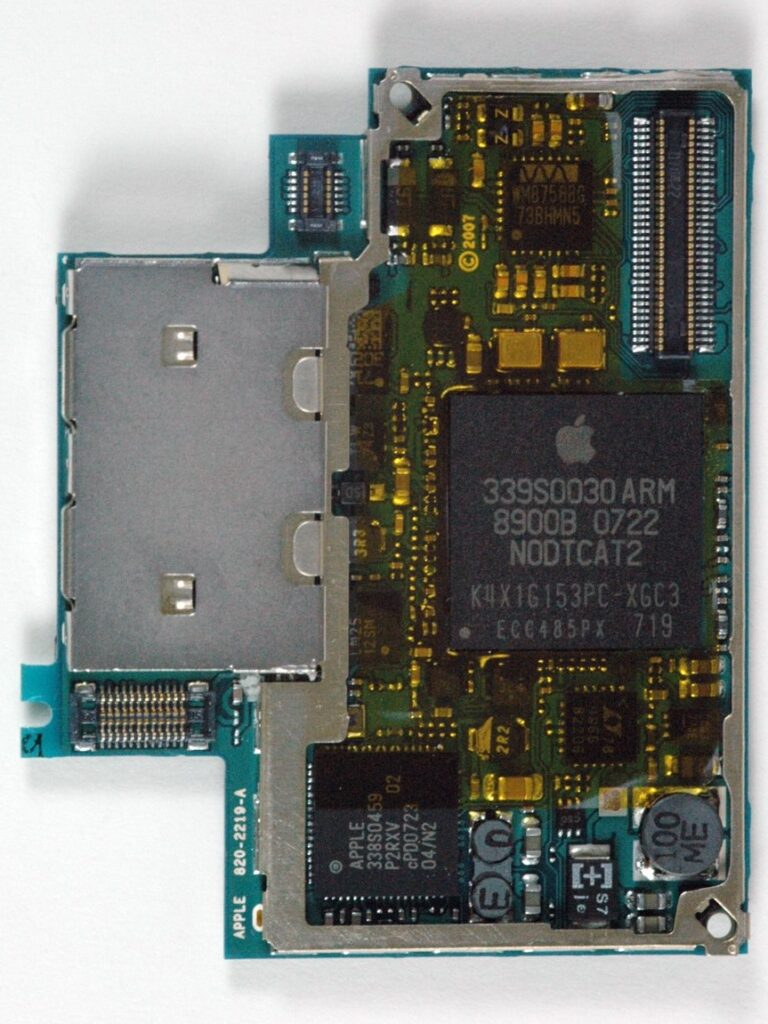
It was an SoC with the designation S5L8900 combining an ARM core and a PowerVR graphics chip. However, using off-the-shelf solutions provided by third-party manufacturers was a vision that Apple’s management rejected at the outset, and ultimately the chips in the iPhone were to be the Cupertino company’s product. For this to be possible, the company had to create or buy a design “team.” Eventually, the latter solution came true and a year after the launch of the first iPhone, Apple acquired Palo Alto Semicoductor for $278 million, thus gaining overnight a complete team of engineers who were soon to present the world with the first processor signed with the Apple logo.
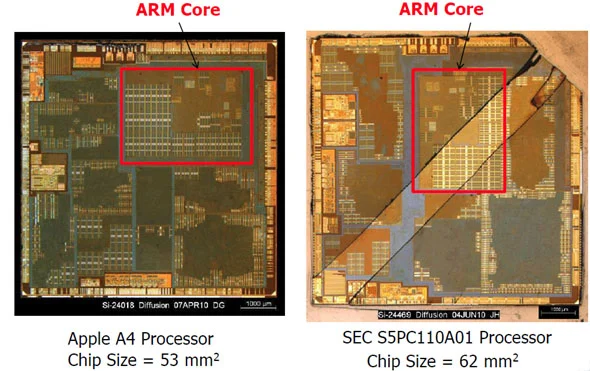
The result of the work of the new team was the appearance of the first silicon core from Apple, the A4 processor, which was the brain of the iPhone 4. Although the designed chip was the work of engineers from PA Semiconductor, because that was the name under which the previously mentioned company met, it was quite inspired by previous models of chips designed by the Koreans. Looking at the layout of the two chips, it is quite easy to see the similarities.
Although, in Apple’s defense, it should be mentioned that the A4 chip lacked quite a few I/O (input/output) blocks. Samsung’s designs installed in the first iPhones were universal in their way, and some of their functionality was not used in the target device. Apple engineers decided to cut out everything they wouldn’t need, making the chip simpler to build and more energy-efficient.
Although Samsung’s chips could not be found in the new iPhones, cooperation between the two companies continued to flourish. Apple’s new units were produced on the same production lines as earlier processors from Korea. At the same time, the Americans continued to invest in the semiconductor development division. One of the more interesting purchases was the acquisition of Intrinsity, primarily for their fast14 technology, which was a tool to simplify the structures designed in silicon.
Thus, in addition to being a company that designs electronic devices, Apple also became a semiconductor manufacturer without its own factories, and another chip was already looming on the horizon, a kind of milestone in this story.
Supposedly ARM, but not quite....

There are two ways to obtain a license for ARM processors. The first is to buy a ready-made core, for example ARM Cortex which is what most processor manufacturers, such as ST Microelectronics for example, do. Alternatively, you can take a slightly more difficult path and choose to license the ARM architecture and build your own CPU based on it, and this is what Apple has chosen to do, thus gaining full control over its own hardware.
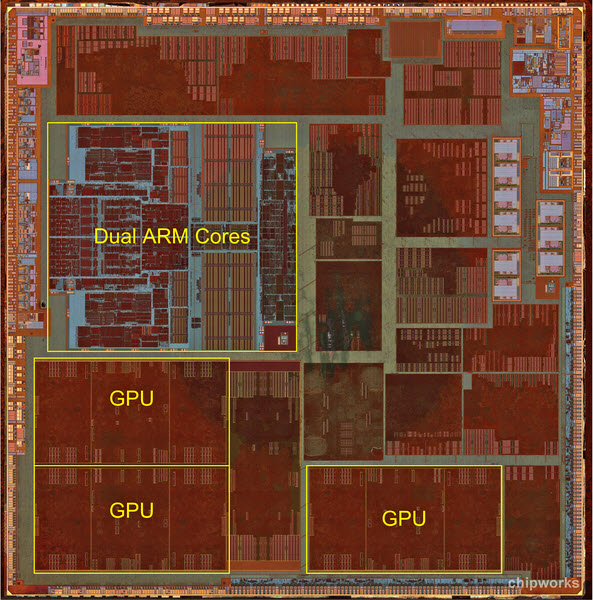
The result of buying a full license for the “chip design” of ARM chips was the 2012 A6 processor, which debuted in the fifth-generation iPhone. Apple based it on its proprietary Swift architecture, which was based on the ARMv7-A instruction set. The unit was groundbreaking primarily through its own architecture unlike anything before, and even if Apple’s designers modeled it on some chip, it will remain a mystery. However, despite the release of another CPU, the corporation with the bitten apple logo has not stopped investing in its semiconductor design department.
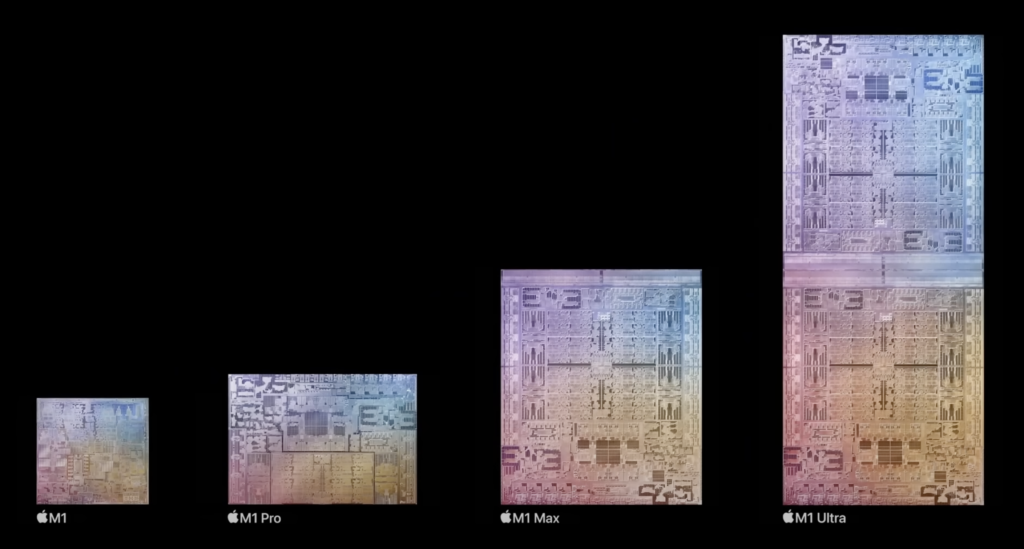
Each successive unit presented by Apple in the following years was better than its predecessor. They were characterized by an increase in performance, smaller size, greater energy efficiency and more, but the most important aspect was that the chips were based on a proprietary architecture whose native performance increasingly outperformed the competition. Another milestone after the A6, we can consider the release of M-series processors, which were initially found only in MacBooks. Thanks to them, Apple’s new computers far surpassed the performance of their predecessors, which had Intel’s x86-based processors as their brains.
The Cupertino team managed to design truly remarkable chips. Powerful and at the same time energy-efficient, but not everyone was happy with the course Apple took.
Seeking challenges

Designing mobile processors is an interesting job, but in 2019 the three Apple employees decided they needed new challenges and preferred to focus on designing chips for server applications, which is relatively more challenging for a designer.
Gerard Williams was director of new platform architecture, Manu Gulati held the position of chief SoC architect, while John Bruno was in charge of systems architecture. All three joined the Apple team around the launch of the A4 chip and worked until the release of the M1 processors. They were an experienced trio who knew the Cupertino company’s semiconductor division inside out, and while we can find many excellent engineers at Apple, they were the ones responsible for the development of subsequent A-series chips and past mobile processors.
However, looking for new challenges, today’s three heroes decided to start their own company in 2019 under the name NuVia.
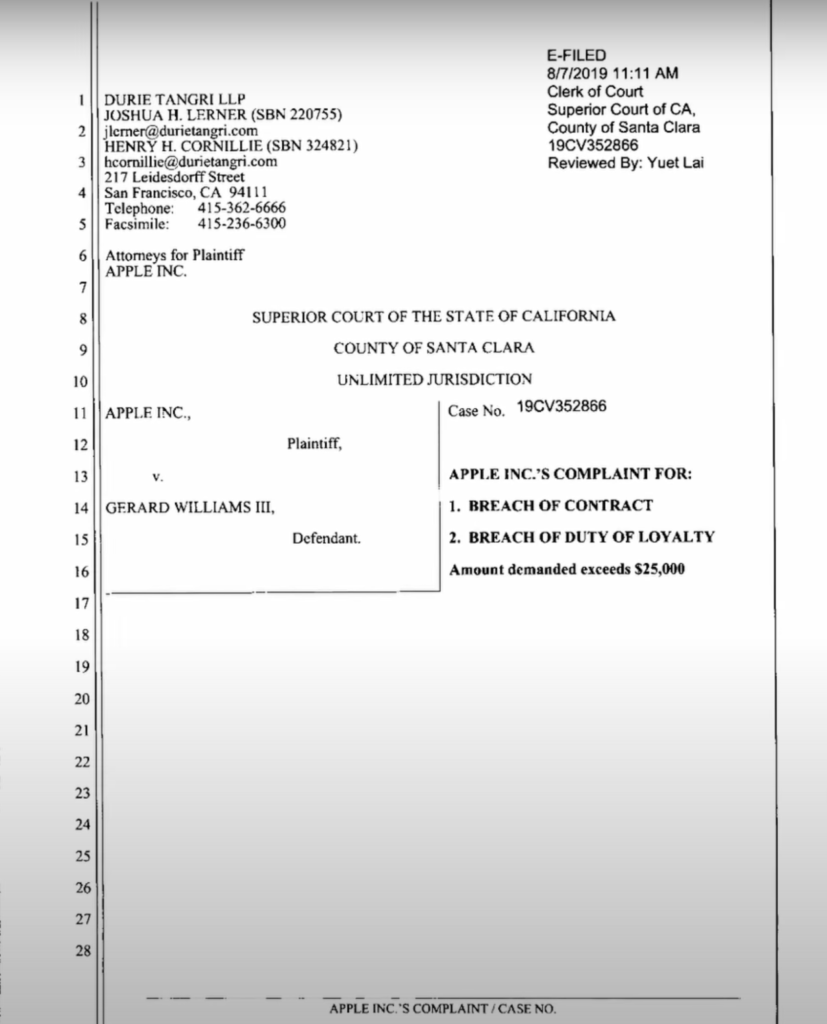
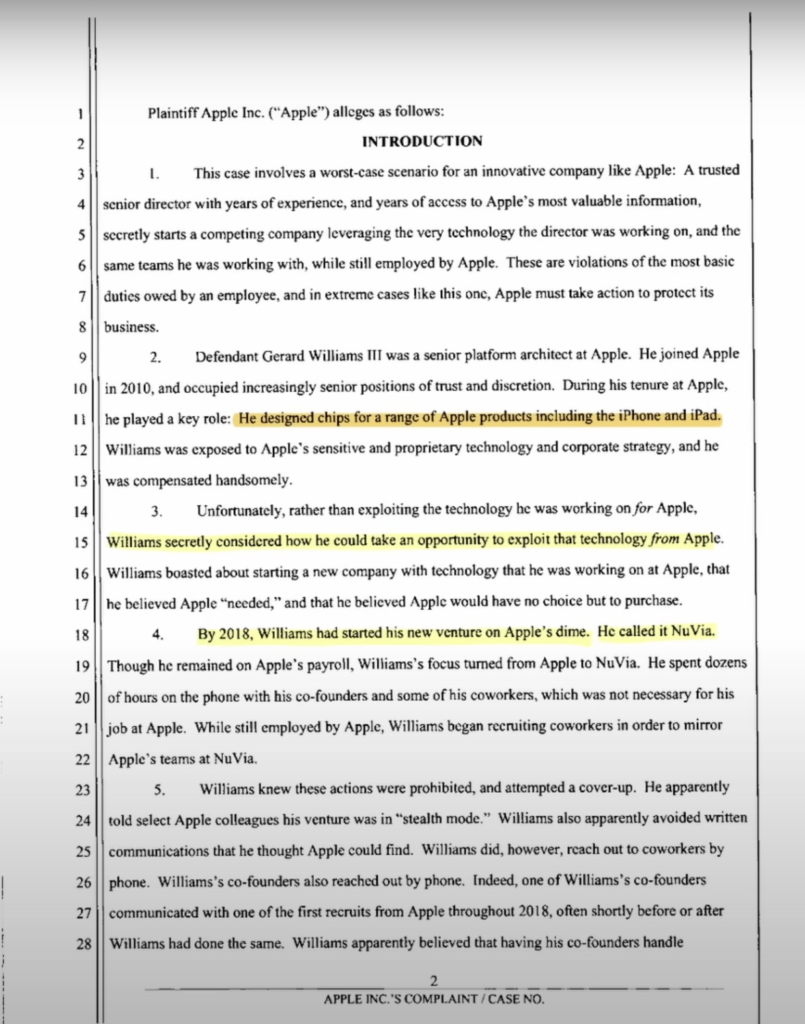
Apple’s lawsuit against Gerard Wiliams. (https://www.youtube.com/watch?v=VQKMoT-6XSg)
Apple’s response to the creation of NuVi was a lawsuit against its main founder. The company alleged that Gerard Williams, while he was still working at Apple, planned to create his own company and recruited among Apple Park employees. An allegation of this type is quite serious, but very difficult to prove, especially in California, where the law favors fair competition.
The litigation went on for three years, but nothing ultimately came of it, and after that time Apple withdrew the lawsuit.
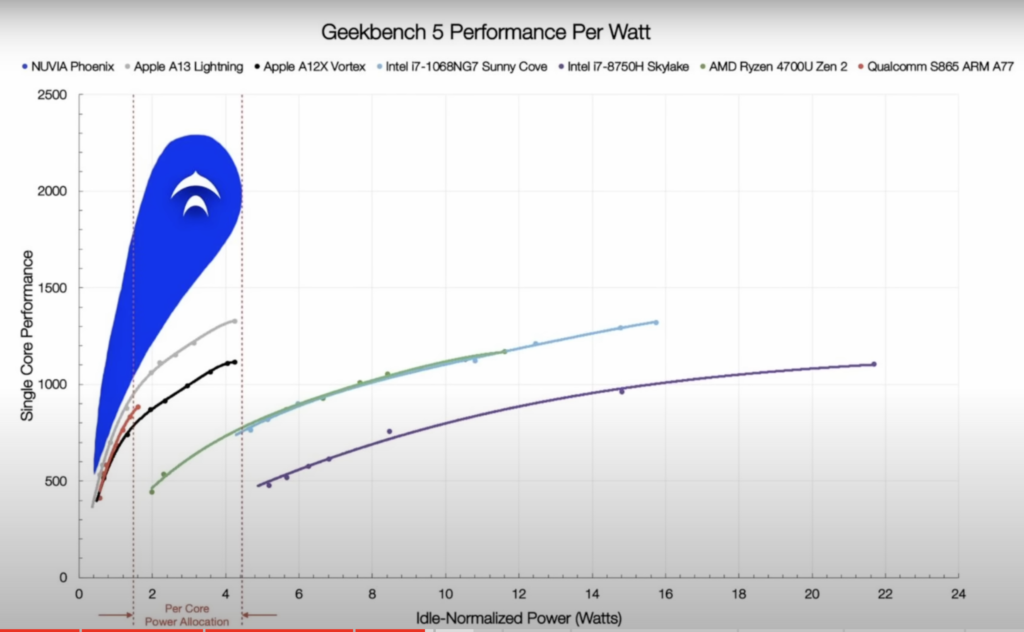
After NuVi was created, Williams’ team immediately got to work, resulting in the NuVia Orion processor and proprietary Phoenix architecture, which was published some time later. The designers set themselves a rather simple goal – to increase performance with no increase in power consumption. Based on the first published comparisons, it can be said that the task was accomplished. Orion processors were expected to deliver a twofold increase in performance while maintaining their energy requirements. The company was on its way to show the world something really interesting, but come 2021.
Back to the corporation
In 2021, NuVia is bought out by Qualcomm for $1.4 billion, with the goal of implementing the Phoenix architecture in the company’s future SoCs. Now you know why the Snapdragon X processor story really begins with Apple.
An interesting technology came to Qualcom, the capabilities of which we didn’t even have a chance to know, but the company decided to invest a little and buy the proverbial cat in the bag. Although, in fact, it may have been primarily about three former Apple employees who built the semiconductor team at the Cupertino-based company. Although it is somewhat ironic that Williams’ team left Apple to no longer design mobile units, and after time they were bought out by another manufacturer of such processors.
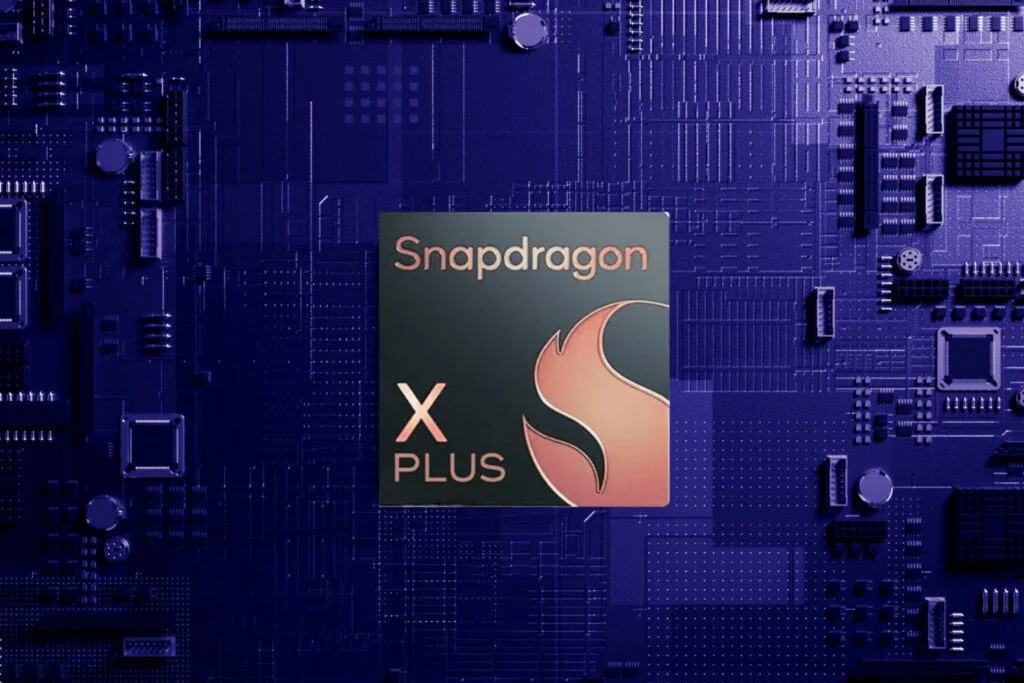
As we can learn from the available information, Qualcomm Snapdragon X chips are the result of the implementation of the Phoenix architecture, although we do not know to what extent it is compatible with the original NuVi. I could give some dry technical facts about these processors here, but I would really like to draw your attention to just one point. Qualcomm’s chips will be produced in 4nm, and the area of the core itself will be about 170-180mm2. This number is extremely close to competing chips from other manufacturers: AMD Ryzen 7000 series – 178mm2, Intel Meteor Lake 174mm2, Apple M3 146mm2. With this, we know that the Snapdragon X will be a full mouth laptop processor, and this is the chip segment that Qualcomm will target. It’s also interesting to note that these chips will not consist of powerful and power-efficient cores, which has already become somewhat of a standard in the designs of other manufacturers. As far as I know, the Phoenix architecture did not provide for such a solution.
The whole thing looks really interesting, as I mentioned at the beginning, this could be the first approach to Windows on ARM that succeeds. But even so, there are still many question marks. We still don’t know much about the architecture of the processor, its performance results come from the manufacturer itself or the related community. In addition, ma recent Qualcomm conference presented data different from previous presentations. Performance results decreased, the supported memory timings were lowered, and the amount of cache memory was reduced. Of course, this could be the effect of the childhood of this design, as it is nevertheless something new in Qualcomm’s portfolio.
A separate issue, of course, is also the software that the new Snapdragon will work with. In the case of Apple’s mobile processors, software issues have been optimized for the new architecture and specific chipsets. I’m afraid that in the case of Microsoft and Windows we can’t count on a similar effect, unfortunately we fall into the trap of universality here. This may be the reason why their maximum performance will never be extracted from Qualcom’s processors. What the future will bring, we will see, this could be Windows’ first step towards ARM, but whether in a moment Microsoft will decide to turn back to the well-known x86 is an open question.
Sources:
- https://hothardware.com/news/analysts-confirm-apples-a4-similar-to-samsung-cpu
- https://www.ifixit.com/Guide/iPhone+1st+Generation+Logic+Board+Replacement/447
- https://www.youtube.com/watch?v=VQKMoT-6XSg
- https://community.arm.com/arm-community-blogs/b/architectures-and-processors-blog/posts/a-brief-history-of-arm-part-1
- https://www.zdnet.com/article/inside-apples-a6-processor/
- https://docs.qualcomm.com/bundle/publicresource/87-71417-1_REV_F_Snapdragon_X_Elite_Product_Brief.pdf
- https://www.qualcomm.com/products/mobile/snapdragon/pcs-and-tablets/snapdragon-x-elite#Documentation
- https://appleinsider.com/articles/20/02/14/former-iphone-chip-designer-hits-back-at-apple-for-anticompetitive-practices
